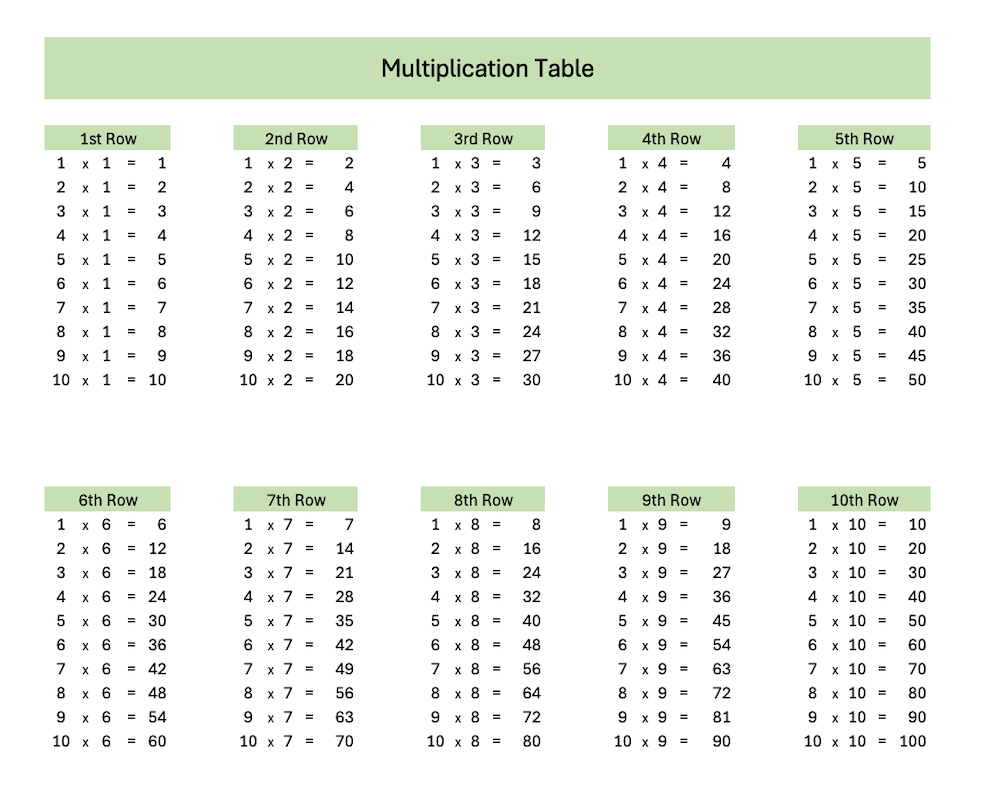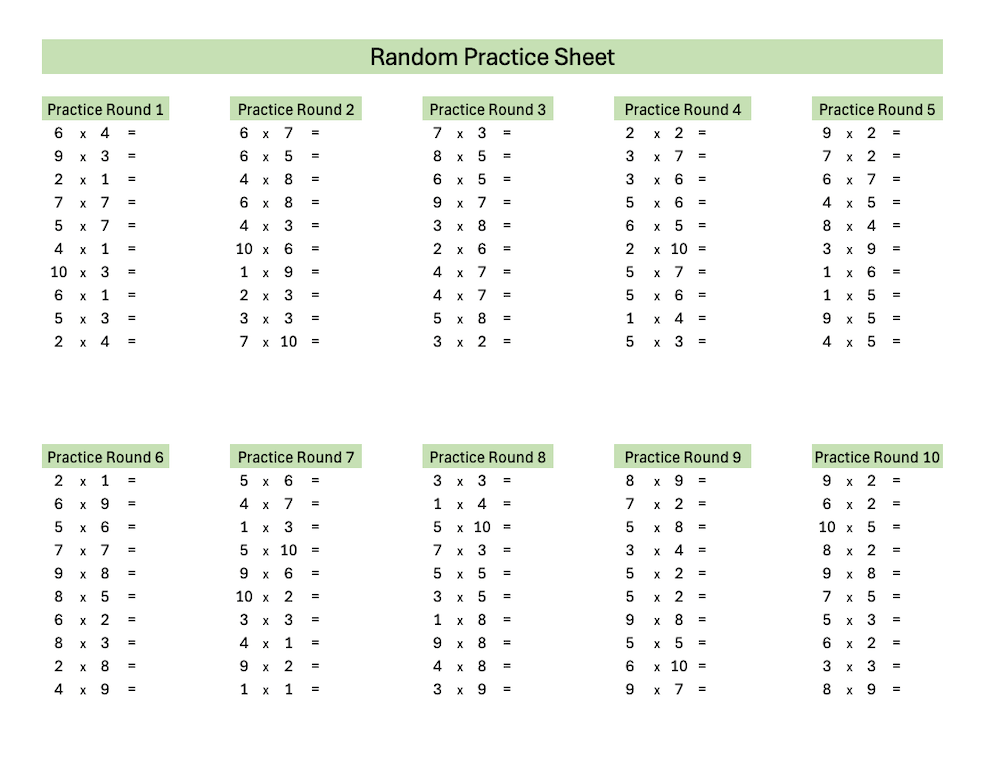Even if everything can be calculated digitally and automatically, you should still be able to know your multiplication tables. For this purpose, there is an Excel template here for learning the multiplication tables.
How do I learn the multiplication tables with Excel?
On the first page of the Excel file, you will find an overview of all calculation variations of 1 and 10. Starting with the 1s series up to the 10s series. All results are visible here.
For safety and to check, you can print out the overview or solution sheet.
On the second worksheet (below it is called “practice sheet”) you will find 100 tasks(!) to practice. The numbers are automatically generated randomly. Press the “F9” key on the keyboard if you want to load new numbers, this will change the values automatically.
On the last worksheet, you find all multiplications from 11 to 20. So, you can expand your knowledge with these calculations!
Screenshots of the multiplication tables with Excel
There is the small multiplication table (1 x 10–10 x 10) and the large multiplication table (1 x 11–10 x 20). For the first, we integrated a learning sheet.
Multiplication table 1 to 10

Practice sheet with random numbers for multiplication from 1 to 10

Multiplication table 11 to 20

Master your multiplication skills with this Excel Template – download it here
If you like my templates, I’m looking forward to a little donation 🙂
3 tips for learning the multiplication tables: Have fun and succeed!
The multiplication tables form the basis for many mathematical skills. With these 3 tips, you or your child can learn them in a fun and effective way:
1. Build on understanding instead of memorizing:
Instead of mindlessly cramming number sequences, you should understand the structure of the multiplication tables. For example, using the example of the 2s series, show that this is created by repeatedly adding 2 (2 + 2 = 4, 2 + 2 + 2 = 6, etc.). This way, you don’t just work out the results mechanically, but understand the connections.
2. Use different learning methods:
The key to success is variety! Combine different learning methods to learn the multiplication tables in different ways.
- Visual support: Use our multiplication table or create your own fact sheets with pictures or symbols.
- Playful learning: Integrate games such as multiplication bingo or card games into the learning process.
- Movement and music: Sing songs about the multiplication tables, or combine the learning content with movement by jumping around the room when you are being tested.
3. Practice regularly and with joy:
As with any new skill, the key to success in learning the multiplication tables is practice. Build short learning units into your everyday life instead of cramming everything at once. 10 minutes of concentrated practice per day is more effective than hours of studying at the desk.
Make learning fun! Reward progress and create a positive and motivating learning atmosphere. With these tips and a little perseverance, everyone can master their multiplication tables in no time!
